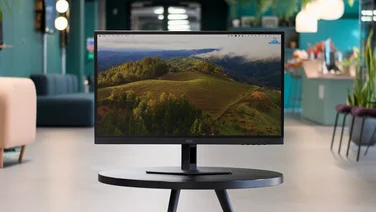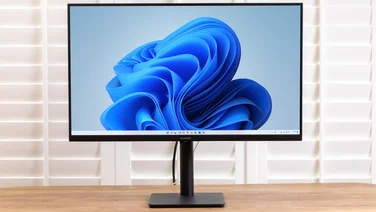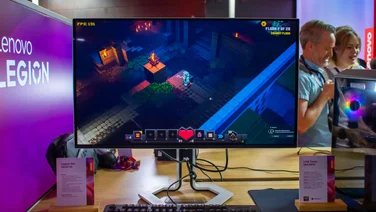To help us provide you with free impartial advice, we may earn a commission if you buy through links on our site. Learn more
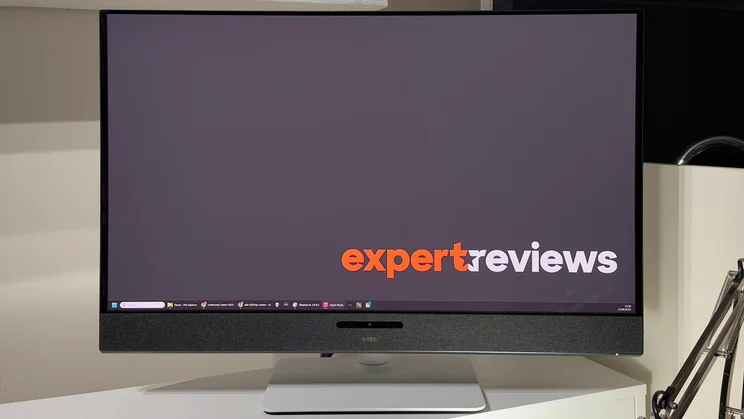
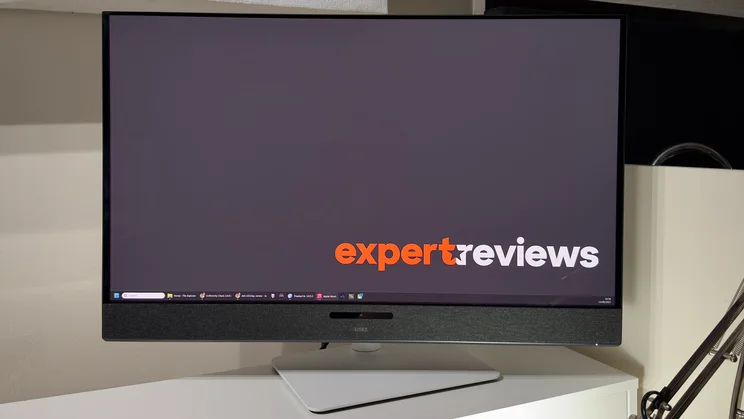
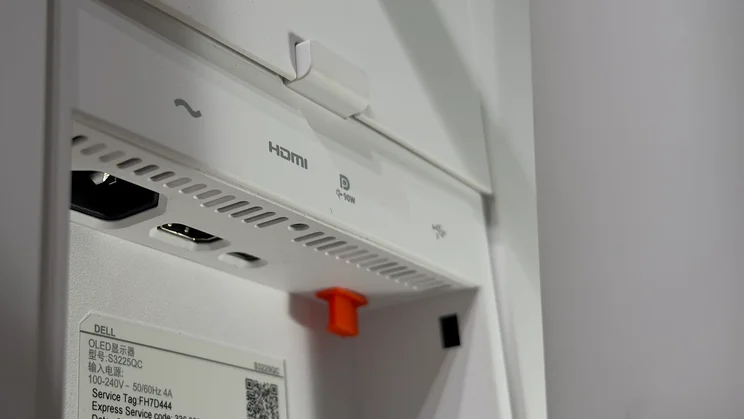
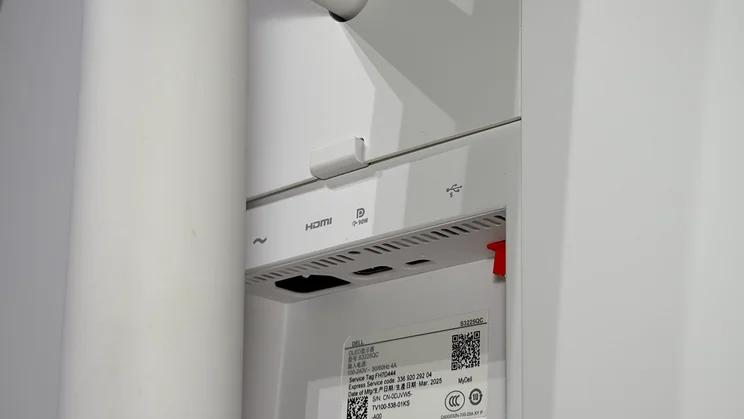
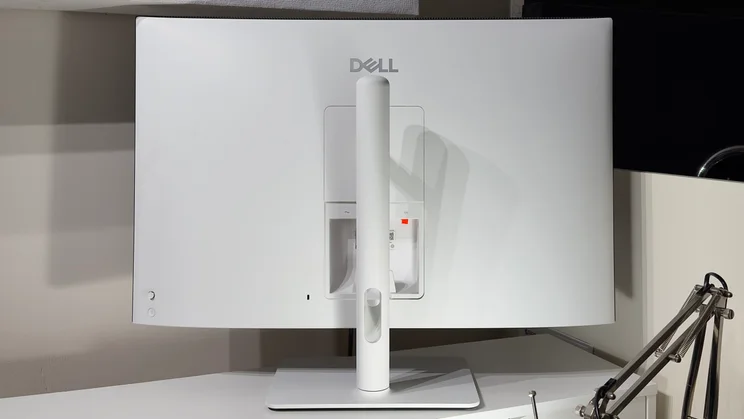
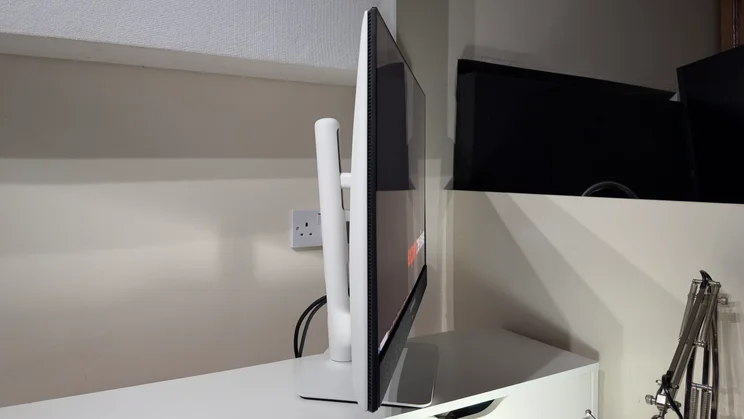
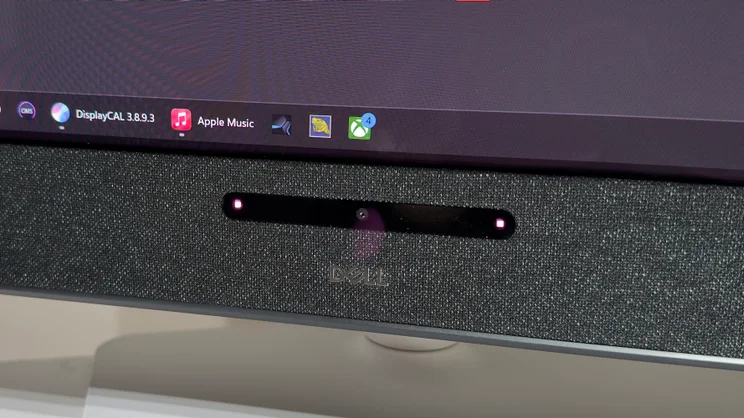
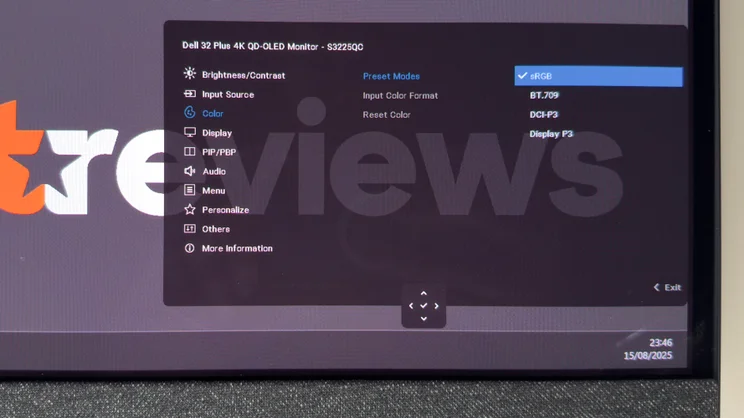
- Great image quality in SDR and HDR
- Fast response times
- Good built-in speakers
- Buzzing noise on white screen
- Frugal connectivity
The Dell 32 Plus ticks every box for a luxury monitor – and a few besides. A glorious 32in, 4K QD-OLED panel? Tick. Stylish design that looks good from any angle? Tick. A built-in soundbar with spatial audio support for surround sound without the clutter? Tick.
For just under £800, this monitor packs an awful lot of good stuff in. Could it be the monitor upgrade you’ve been waiting for? I think it might just be.
Dell 32 Plus S3225QC: What do you get for the money?
The Dell 32 Plus looks more like a small TV than a conventional PC monitor. A thick strip of grey fabric runs along the bottom edge and this conceals five built-in speakers. The rest of the construction is classic 2025 Dell, so you get a smoothly curved rear in a classy off white and a smart-looking cylindrical stand. The branding is subtle, too, with a pleasingly small Dell logo on the front and a larger one on the rear.
Despite the lifestyle focus, there’s still an ample amount of adjustability here. The stand provides 110mm of height adjustment and a useful amount of front-to-back tilt. There’s no pivot function, but given the spatial audio system that’s no surprise.








Talking of spatial audio, this is a relatively unusual addition. The five in-built speakers are each powered by 5W amplifiers, and Dell claims the system is “enabled by AI-driven headtracking”. In practice, this means that the little bank of sensors in the centre of the soundbar aim to tailor the sound to your position.
In practice, this works quite well. With stereo material the main effect is that the audio pans towards whichever side you’re on. With spatial audio content and games, however, it does a pretty good job of keeping you surrounded in a bubble of audio. There’s not the actual sense of sound coming from behind, but the audio wraps around the sides in a surprisingly convincing manner.








With games, where you’re sitting close to the monitor, the spatial audio works well. With movies where you’re sitting further away, it’s less effective – and annoying on-screen pop-ups nag regularly when you move out of range. My advice is to make a beeline into the S3225QC’s menus and turn them off.
Talking of which, the Dell on-screen display is one of the better examples. A small four-way joystick on the rear brings up the customisable quick menu selections with a single tap, providing quick access to the features you use most. Tap it again, and you can delve through the OSD and adjust all the settings in the clear, well-laid-out menus.








The only thing the Dell 32 Plus lacks is connectivity.The 32 Plus only has two video inputs: one HDMI input and an upstream USB-C port, which supports DisplayPort Alt, 5Gbits/sec of data and up to 90W of power delivery. Aside from that, you get two downstream USB-C ports: one is on the rear and the other is on a front-facing port on a panel that pops out from under the monitor’s front lip.
It’s this dearth of connectivity that’s the 32 Plus’ biggest shortcoming. A monitor of this calibre would make a great hub for multiple devices, but the single HDMI input feels overly restrictive.
How good is the image quality?
As you’d expect for a QD-OLED panel, the Dell 32 Plus looks sumptuous from the off. The perfect black level response and intensely vibrant colours look like a fresh coat of paint compared to the slight dullness of lesser LCD-based panels.
Whether it’s games, movies or just browsing the web, the vibrant, natural-looking colours make it a really pleasing experience, and while the gloss anti-glare coating is very reflective, it lends images a little extra pop, while doing a good job of subduing brighter light sources.








In our tests, the S3225QC delivered some excellent results. The claimed 99% DCI-P3 coverage was right on the money: my colorimeter pegged the display at 99% DCI-P3 and 95% Adobe RGB coverage. Colour accuracy was good, too, with the default Standard picture mode providing an average Delta E of 1.26. The white point was a little too warm at 6,076k, but this isn’t a big problem unless you need perfect colour accuracy – it still looks great.
The S3225QC’s Creator modes add some factory calibrated options for Display P3, DCI-P3 and sRGB. I tested all three, and these reduced the average Delta E to ~0.5 with maximum deviations of ~1.5. It’s a bit of a shame that the white point is closer to 6,000k for the Display P3 and sRGB profiles, though, when it ought to be around 6,500k.
HDR performance is very respectable. You even get Dolby Vision support, which is something of a boon. This worked well via the Windows 11 Netflix app in our tests. You’ll get peak highlights of 451cd/m2 if you leave the monitor in its default DisplayHDR True Black mode, but switch to the HDR Peak 1000 mode and peak brightness for small, localised highlights more than doubles to 996cd/m2. The monitor can’t sustain this, though, and the brightness drops back to around 880cd/m2 after a few seconds.








It’s worth noting that overall brightness – often referred to as “scene brightness” – is lower than LCD-based rivals. The effective brightness level tops out around 240cd/m2, so you’ll have to keep the Dell’s brightness control at around 80% or higher to provide a usable brightness level for daytime usage. This also means the monitor can struggle to produce really bright outdoor scenes – nighttime scenes look amazing, with crisp, bright highlights, but daytime scenes can look dimmer than monitors with higher peak scene brightness levels.
Another more irritating issue, however, is that the panel tends to buzz quietly when it’s displaying a full screen of white or light grey. This is because each of the QD-OLED pixels has to emit the maximum brightness of red, green and blue to produce white, and this pushes the panel’s energy consumption to its limit – I suspect what I’m hearing is coil whine from capacitors in the S3225QC’s power supply. This slight buzz will only bother users who spend a lot of time creating documents in office apps, but it’s worth being aware of.
Switch your attention to games or movies, however, and you’ll swiftly find yourself distracted by the S3225QC’s motion clarity. The AMD Freesync Premium support provides adaptive sync from 48Hz to 120Hz and the result is silky smooth movement throughout that range. Put the S3225QC next to a standard LCD panel, and the difference is astonishing. It’s so crisp and clear that some buyers may find it off-putting how starkly it shows up the judder in 24p movie material; with games, however, it’s a revelation.
Should you buy the Dell 32 Plus S3225QC?
If you can live with the limited connectivity – and the quiet buzz when you’re crafting documents – there’s a lot to be said for the Dell 32 Plus. The image quality is superb in all the ways that matter, and if you really don’t have room for dedicated speakers, the Dell’s built-in spatial audio is genuinely more immersive than standard stereo speakers.
This isn’t a monitor for pure productivity – it’d be wasted on a diet of Google Docs and Sheets – but if entertainment is your priority, its stunning image quality in both SDR and HDR, crisp motion clarity and effective spatial audio make for a great package. At just under £800, we can’t think of many monitors I’d rather have on my desk.


